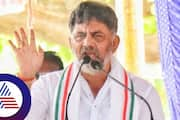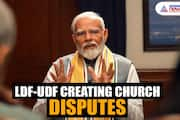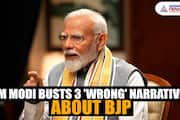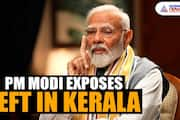Did no one kill the 94 students in Kumbakonam?

No one killed the 94 students on 16 July 2004 in the fire at a school in Kumbakonam town in Tamil Nadu. That is the only takeaway from the order of the Madras High court that dismissed the charges against seven of the ten accused and acquitted them.
Of the remaining three, one had died and the two judge bench modified the sentence against the remaining two, adjusting it to the time they had already spent behind bars.
Parents in Kumbakonam, brace yourself to see P Palanisamy, the founder of the Sri Krishna School, who had been sentenced to life imprisonment by the Thanjavur court in 2014, walk free.
The facts of the case point to sheer negligence and greed on part of the school owners who had clearly treated education as a commercial activity. With a thatched roof top and a single staircase for 782 students to exit from the three Sri Krishna group schools that operated from the same three-storey building, the students were sitting ducks when tragedy struck. The fire had started from the mid-day meal kitchen. All the 94 children who perished in the death trap, belonged to the primary classes, aged between 5 and 10 years.
In fact, the High court verdict only went a step ahead of the 2014 order that acquitted 11 of the 21 who were originally accused. What Thursday's judgement does is to sprinkle salt over the wounds of the aggrieved parents, who have struggled for years to find closure after the horrific tragedy. They blame the government legal team for not arguing the case well.
I remember visiting Kumbakonam soon after the tragedy. I could it as one of the most heart-wrenching stories I have reported on. The scene of the incident was gruesome. You couldn't be just a journalist, passively reporting on the incident. One wept with the parents, consoled them, hugged them, sharing their grief, which was beyond the describable.

But the story as I saw it, operated at two levels. One of course, was about school safety and the need to ensure safe environment to educate children in. To ensure the system has enough teeth to police errant schools and prosecute where necessary.
The second was more difficult. To provide the healing touch to those who have lost their young ones and the space to grieve.
I revisited Kumbakonam one year later. I recall meeting this little girl, about 10 years old, who had lost her younger brother in the tragedy. She had withdrawn into a shell. The mother said every night after the tragedy, the girl had nightmares and she got up screaming, terrified, crying. She had been a bright girl, a class topper but now getting her engaged with her books was not easy. The child had moved to a new school but with a mother and family who were grieving everyday, it was not easy to move on. Her teacher told me the child needed help. So did most of the other children who had come from Sri Krishna school.
When I went to the local graveyard where the children had been buried, there was evidence to show that to almost each of them, there had been a recent visitor. Chocolates, a favourite snack, a dress, jasmine flowers, whatever the mother knew her child loved, had been brought to offer at the child's final resting place. At some places there were photographs and at some others, a drawing or painting of the child's face.

One mother was going everyday to the graveyard to sit by her child and talk to him. Another was offering milk and food, morning and evening to the photograph of her son. She told me her little son can't bear hunger, so she must feed him before anyone in the house eats a meal. She was speaking in the present tense, not as though it was a matter of the past. She wouldn't allow anyone to move his books, toys, school uniform, not even his footwear.
To the credit of the district administration that dealt with the aftermath of the tragedy, professional counsellors were drafted to deal with the post-disaster trauma and help the healing process. It was not mechanically suggested to parents who had lost their children and had undergone a family planning operation, to adopt a child. Initiative was taken to provide medical help, even recanalization to reverse the operation. The effect was also beautiful to see. The few families that welcomed a new biological child seemed to have been able to begin life afresh.
Years later, when I touched base with those who had lost their young ones in the tragedy, they said every time the court heard the case, parents got emotional. A Victims Parents Association was also formed that helps each other cope with emotional lows.
The maximum number of casualties, 13, were reported from Natham village near Kumbakonam. All children from this habitation used to travel to this school on Kasiraman street in Kumbakonam since the village had no school and Sri Krishna school used to operate a vehicle from Natham. The government decided to start a school in Natham immediately with proper safety measures to correct the wrong.
Here I met a mother who was coping not just with the death of her child but also ignominy because villagers were accusing her of ``accepting'' a compensation of one lakh rupees after her child's death. The barbs that implied she had traded her child's life for the money, were hurtful.
``Will any mother say you can take my child's life and give me money instead,'' she asked, swearing on the village Goddess that she had not taken a rupee of the compensation money.
Justice delayed is justice denied. The parents in Kumbakonam believe it has been both delayed and denied.
















